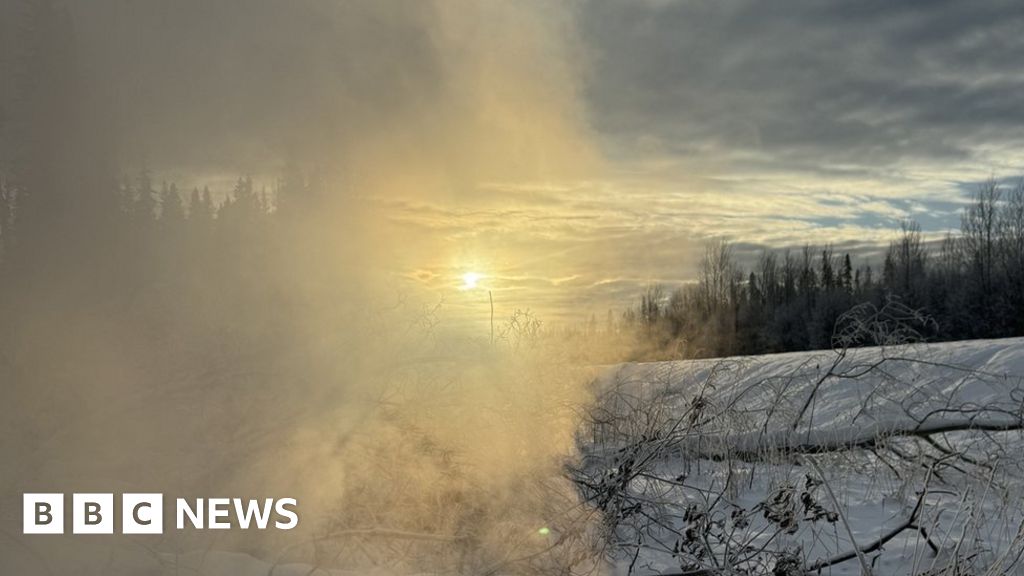Persistent Wildfires Plague Canada Year-Round
The phenomenon of “zombie fires” in Canada has become increasingly alarming as the wildfire season stretches longer than ever. Researchers and firefighting agencies are undertaking urgent efforts to combat these persistent blazes that smolder beneath the surface, often reigniting as conditions change.
The Emergence of Zombie Fires
Throughout the winter months, even in frigid temperatures of -40°C (-40°F), smoke has been reported billowing out from beneath the snow. Marty Wells, a wolf trapper and fire crew leader, noted that as he drove north from Fort Nelson, British Columbia, he observed columns of white smoke rising from the ground. These “zombie fires” remain hidden under the snow yet continue to burn, sometimes penetrating over a foot (30 cm) into the peat-rich soil.
As the spring thaw commenced in early May, these underground fires reawakened, fueled by dried vegetation, transforming into a devastating inferno that consumed approximately 700 square kilometers (approximately 270 square miles) north of Fort Nelson. Currently, the town is encircled by flames from multiple sides, prompting evacuations as the fire draws closer to residential areas. According to Wells, the rapid escalation of the blaze was unexpected, driven by a combination of strong winds and conducive conditions.
Drought and Wildfire Growth
Canada’s boreal forests, which cover more than half of its land area, have been severely impacted by wildfires, with the country experiencing an unprecedented consumption of 185,000 square kilometers (71,429 square miles) of land in 2023—the equivalent of Syria’s entire land area. Many of these fires remained dormant over the winter, only to erupt in the spring, a phenomenon known as “overwintering” or “holdover” fires.
Severe drought has afflicted much of Canada for three consecutive years, particularly in Alberta, British Columbia, and the Northwest Territories. The snowpack in British Columbia was found to be 37% below normal this winter, further exacerbating dry conditions. As the melted snow coincided with strong winds, the likelihood of these smoldering zombie fires spreading was dramatically increased.
The Science Behind Zombie Fires
Research indicates that these zombie fires are not only becoming more prevalent but are also indicative of the escalating severity of wildfires due to climate change. Mike Flannigan, a wildland fire expert, states that the ongoing situation in British Columbia is unprecedented and that most of the substantial area affected is due to these overwintering fires.
How Peat Affects Fire Dynamics
At Imperial College London, researchers are studying the behavior of peat, a rich carbon source formed in waterlogged conditions. In their experiments, they demonstrated that dry peat burns significantly quicker than moist peat. This has severe implications for areas impacted by drought, where peat fires can smolder throughout winter and reignite come spring.
The challenges of extinguishing such fires are immense, as witnessed during a peat fire in North Carolina that required an enormous 7.5 billion liters of water to suppress. Advanced suppression techniques are being improved, including a new suppressant designed to enhance water penetration into peat soils, with the potential for faster extinguishment.
The Impact on Ecosystems
As fires increasingly devastate boreal forests, the ecological ramifications could lead to irreversible changes. Recent expeditions to previously burned sites have uncovered landscapes less characterized by the promise of regeneration and more indicative of devastation, leading experts to express concern about future biodiversity.
Summary of Wildfire Statistics
| Year | Area Burned (sq km) | Fire Incidents |
|---|---|---|
| 2020 | 185,000 | Over 400 |
| 2021 | 250,000 | Over 500 |
| 2022 | 190,000 | Over 450 |
| 2023 | 185,000 | Over 600 |
The continuous cycle of these zombie fires poses a serious threat to combating climate change, underscoring the urgent need for action to mitigate emissions. As communities adapt to this evolving landscape of wildfire threats, the path forward will require resilience, innovation in firefighting, and crucially, a commitment to reducing greenhouse gas emissions.


